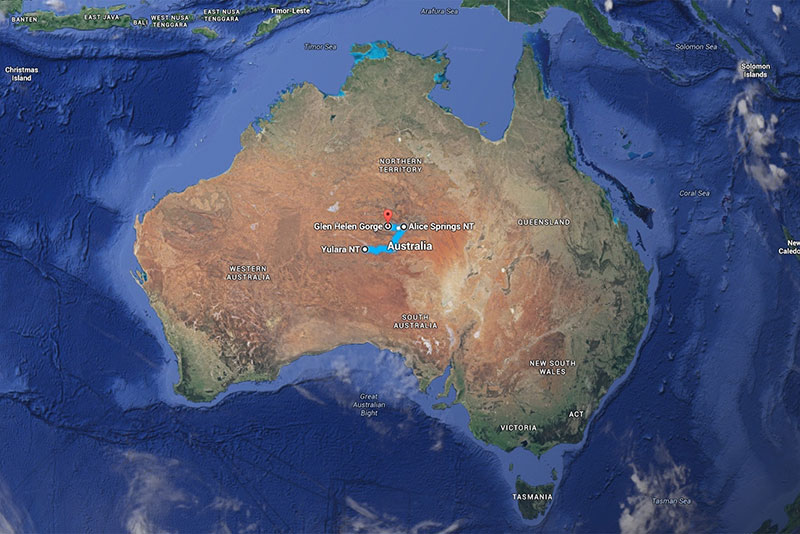
After a few days near Sydney where I hung out with David Fischer and saw many fine animals and was mysteriously lacking in stamina, I flew to Alice Springs for the next leg of my quest. I stayed in Alice (as her friends call her) the first night where I rented a car, bought a cooler ("esky" in Australian), and stocked up on some food so I wouldn't be relying entirely on the local restaurants. I had toyed with camping in some parts of the trip, but eventually decided to stay in hotels/motels/lodges everywhere, partly to avoid lugging around camping gear, and partly so I could have comfortable places to stay in my non-herping hours to better energize myself for the herping hours.
Alice Springs is a reasonable-sized town in the middle of the outback, with no other reasonable-sized towns for hundreds of miles in any direction. This means that it is surrounded by good reptile habitat. There is a good road west to the West MacDonnell Ranges, which will be featured on the next page of this account. There is also a good road east to the East MacDonnell Ranges, which I explored on my one night in Alice.
Three gecko species put in appearances for me on that road. One was the ubiquitous Bynoe's Gecko, which is found throughout almost the entirety of Australia, and is often the most common herp in its habitat. I had seen these on every previous trip to Australia so finding more wasn't especially exciting, but they are interesting little beaded-skin padless ground-dwelling geckos. Unlike many of the geckos on Australia's roads at night, these are pretty easy to identify from a distance because they move much more quickly than your typical gecko. This little baby gecko was especially jittery, and prone to stopping in weird positions in those rare moments when it did stop.
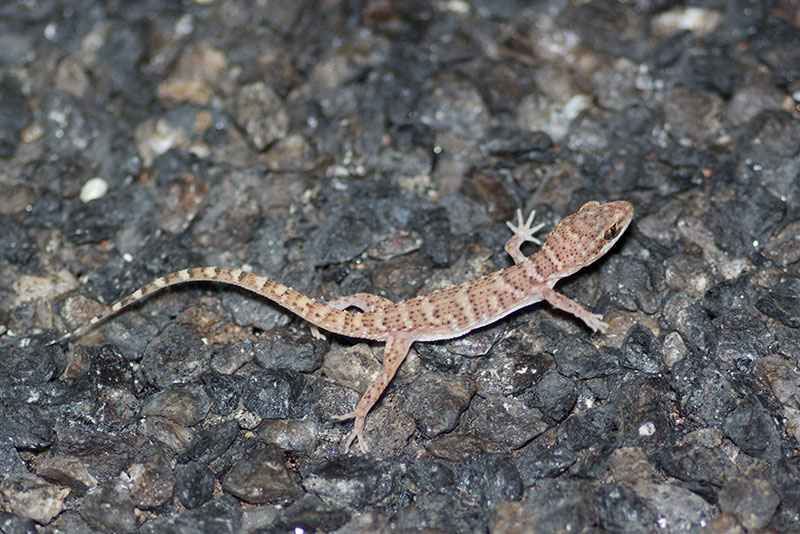
The second type of road-wandering gecko was the Northern Spiny-tailed Gecko. They have rows of paired spines on their tails and also sport spines above their intricately-patterned eyes. None of the road gecko species were particularly interested in sitting still, but these guys weren't too annoying about it. I had seen a bunch of these on earlier trips but I have not yet grown tired of seeing any of Australia's herps (nor do I ever expect to).
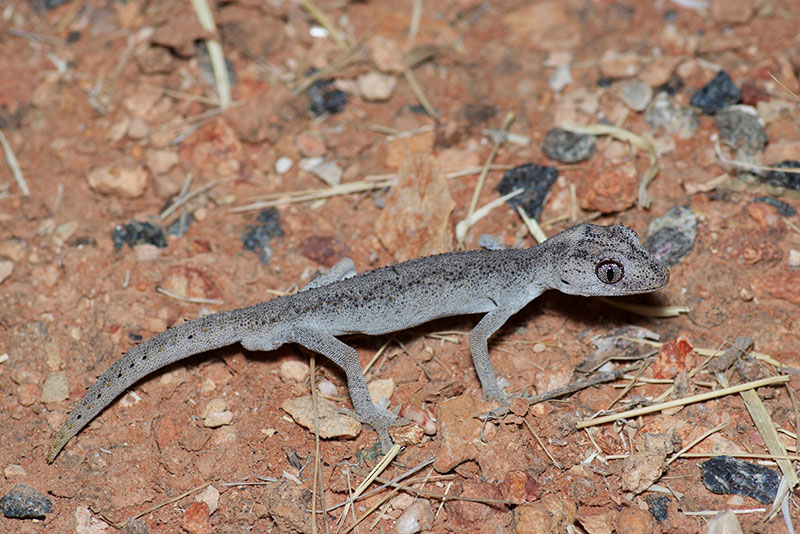
The third type of gecko I saw that night was one new to me, the charmingly named Burrow-plug Gecko, a.k.a. Fat-tailed Gecko. When they're not on nocturnal patrol, they hang out in insect and spider holes and block the entrances with their thick bumpy tails.
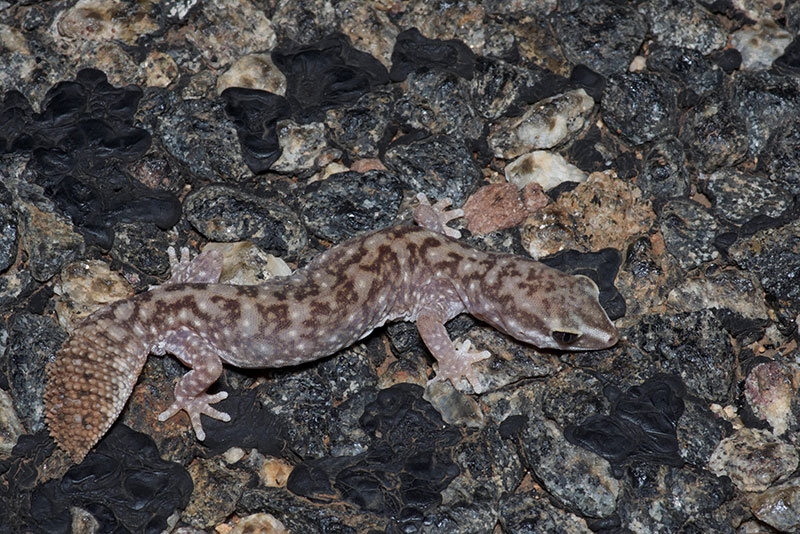
The next morning I made the long drive from Alice Springs to Yulara, which is the small tourist village for the big rock Uluru (formerly known as Ayer's Rock). Uluru itself is one of the iconic wonders of the world, and the desert stretching from Yulara in every direction is full of herps including thorny devils, so Yulara was a natural destination for me. Since I didn't get out herping near Alice until after dark, this would be the first day where I had a chance to see a li'l devil.
Yulara is about 300 miles from Alice Springs ("right next door", in Australian outback terms). The first half of the trip is almost due south on the Stuart Highway, which is the only major road between South Australia and the Northern Territory; you can take this road all the way from Adelaide on the south coast to Darwin on the north coast. This makes it very busy by outback standards, full of road trains (multiple huge truck bodies linked together, usually traveling too fast) as well as every other size of vehicle. 125 miles south of Alice sits a crossroads spot named Erldunda, consisting of a big gas station/shop/restaurant/roadhouse. From here you turn and travel the rest of the way to Yulara on the Lasseter Highway, heading basically due west. Since the Stuart Highway is so busy, you are unlikely to see any live herps on that leg of the journey. You are even less likely to be in a position to do anything about it if you do see a live herp. So I just blasted my way south to Erldunda like everyone else, trying to whittle down the huge backlog of podcasts I had brought along on my phone.
When I reached Erldunda, I thought I should fill up the car, since I didn't know the placement or likelihood of additional gas stations before reaching Yulara. The lines for gas moved extremely slowly here. The gas pumps were all pay-inside-afterwards, which seems to be nearly universal across Australia. To discourage drive-offs, large signs ordered you to leave your car at the gas pump until you had paid. Since this stop is the only decent-sized gas station/shop/restaurant/roadhouse for at least a hundred miles in any direction, many or most drivers would stop for gas, then leave their vehicle at the pump until they had done some shopping and/or had some lunch. I was second in line for a pump for at least thirty minutes, and all I could think about was how thorny devils are most likely to be seen wandering the roads in the morning (and late afternoon) and the morning was wasting away in this gas station line.
I finally filled up and drove west on the Lasseter Highway towards Yulara. About a quarter mile from the turn my head exploded because I saw a big colorful thorny devil strutting across the highway. I simultaneously apologized in my mind to the people who had left their vehicles at the gas pumps for so long and pulled quickly to the side of the road. Lasseter Highway is far less busy than Stuart Highway, but it is still reasonably active with all the tourists and supplies heading out to Yulara and back. So it seemed way too dangerous to try to photograph this devil in situ, and there was no way I was going to leave it unphotographed and unprotected in the middle of the highway. I ran to it, gently picked it up, and ran back, where I released the marvelous beast in the red gravelly desert on the side of the road it was heading toward. It gave me one condescending look and then continued moving forward in a ludicrous two-steps-forward-one-step-back gait like the one used by many chameleons. I grabbed my camera and followed it around for a little while. It would stop moving for a few seconds when I got close, but soon start lurching away. The harsh sunlight and lack of scenic background and the lizard's disinclination to stand still for any significant time and my general brain-stopping euphoria at finally achieving my childhood dream led to a short series of fairly lackluster photos, but I couldn't have cared less.
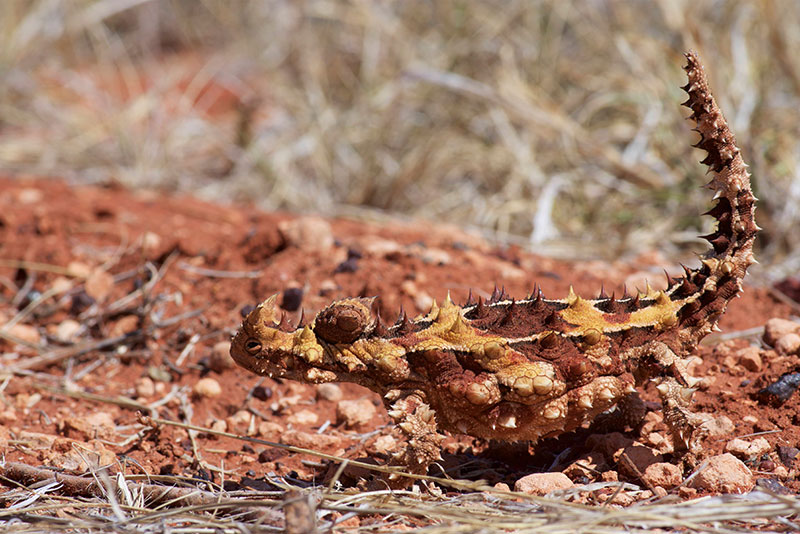
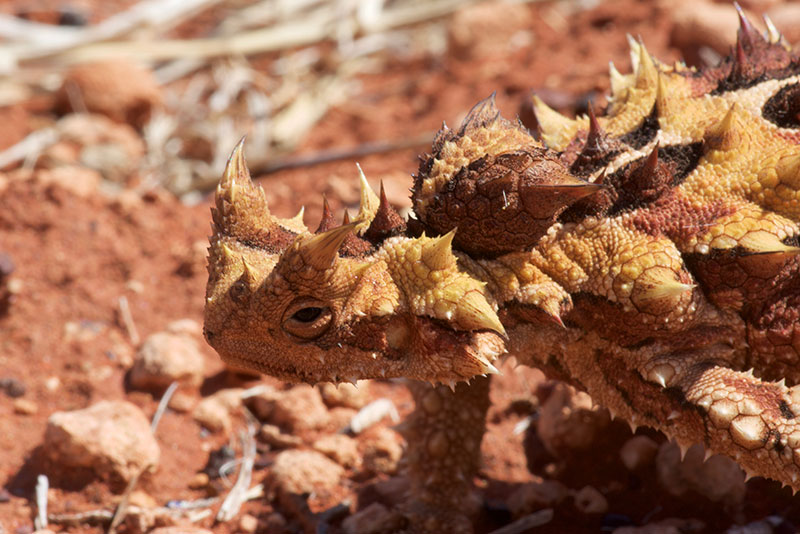
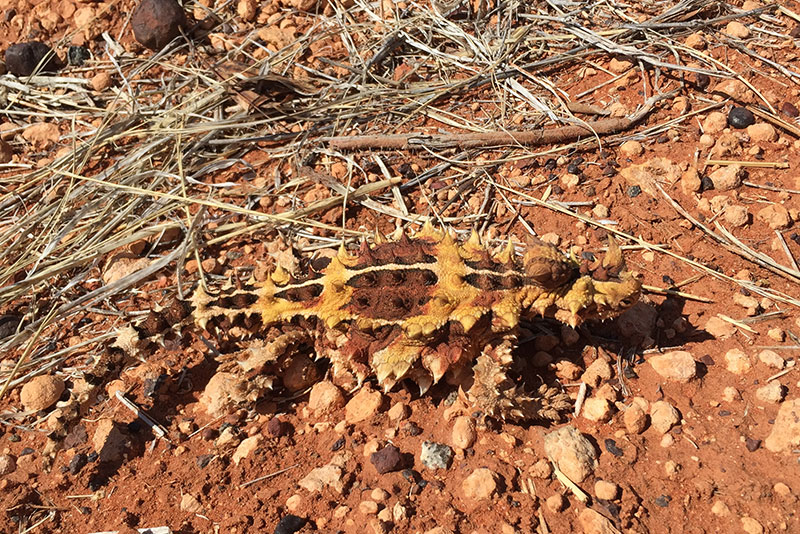
When I arrived at Yulara in the early afternoon and checked into my room, I felt both wonderful and terrible. The wonderful part was for obvious reasons. The terrible part had to do with my ever-decreasing energy level combined with an ever-increasing earache that I had picked up somewhere along the way. It had gotten to the point where I basically couldn't hear from my right ear, and it hurt if I turned my head in certain directions, and it periodically leaked some liquid (which is never what you want, ear-wise). Also, I felt exhausted much of the time. This did not seem good. I rested and slept through the rest of the day, and even decided not to try a nocturnal road cruise this evening.
The following morning I visited the Yulara Medical Centre where a nurse concluded that I had some sort of fungal ear canal infection and a ruptured eardrum. He gave me antibiotics and ear drops and told me that most likely the eardrum rupture would heal itself, but it might take a few weeks or even longer. After a couple of days of these medications, I was feeling much better: my earache was gone, I had regained my missing stamina, and my ear stopped dripping (hoorah!). All the symptoms were completely gone except the hearing loss. For the rest of my time in Australia, I could only hear the tiniest amount from my right ear, and I had to ask people to repeat themselves a lot. A small price to pay for seeing a wild thorny devil, I say! (At home later, I saw my regular doctor who agreed with the treatment I had been given, and my hearing did slowly return all the way to normal.)
I had lost some perfectly good herping time dealing with this annoying medical issue, but after my visit to the medical center (sorry, centre) I started to get back in the groove. That afternoon I came across a bearded dragon about fifty feet from the grocery store in the middle of Yulara. This was a Dwarf Bearded Dragon, which turned out to be the only one of that species I came across on the trip. One of the less-beardy species in this genus, but still a fine lizard.
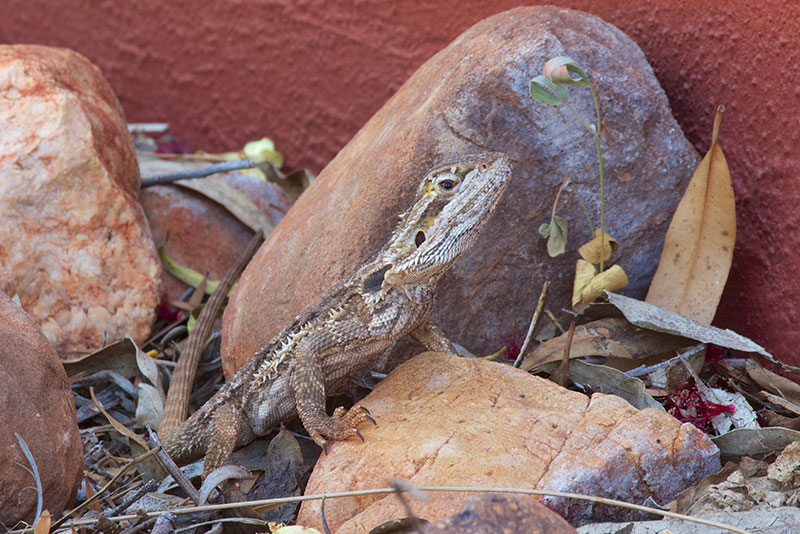
Later I hiked the base walk all the way around Uluru, a little more than six miles. For anyone who needs reminding, this is what Uluru, the world's most massive monolith, looks like.
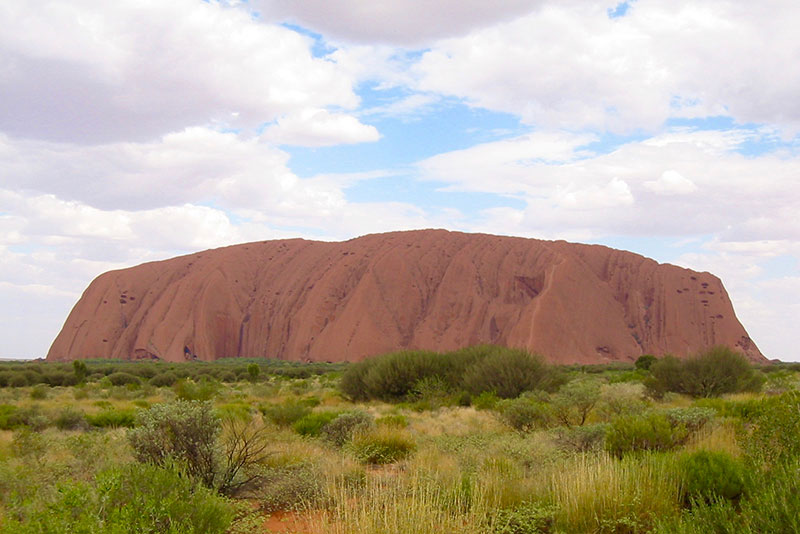
Up closer, Uluru is full of interesting details.
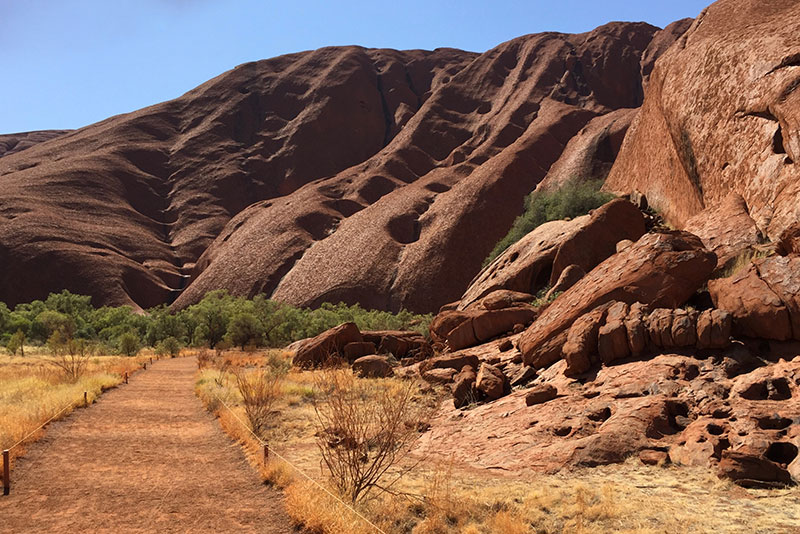
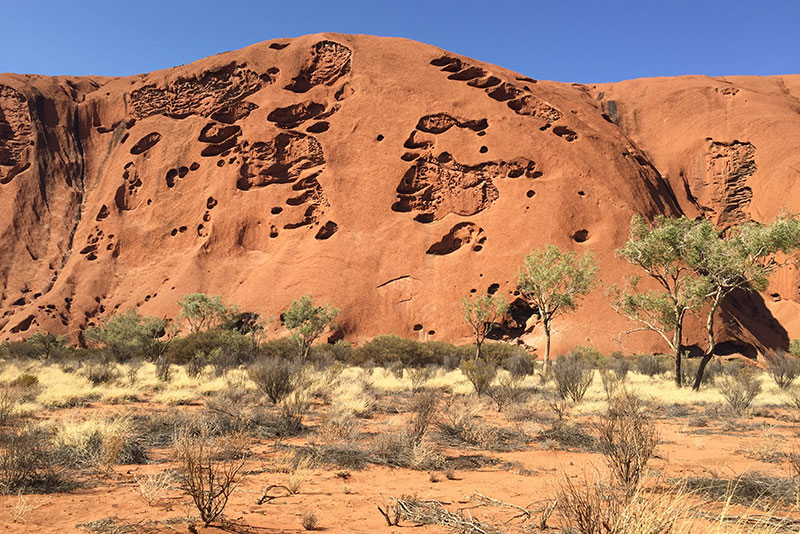
Amazingly, on a nice warm spring day, with hardly anyone else on the trail (I think I passed three other people), I saw exactly zero snakes and one lizard. And it was only a little bitty lizard, a young Common Desert Ctenotus. Ctenotus is a populous Australian skink genus whose species are quite similar to the whiptail lizards of U.S. deserts.
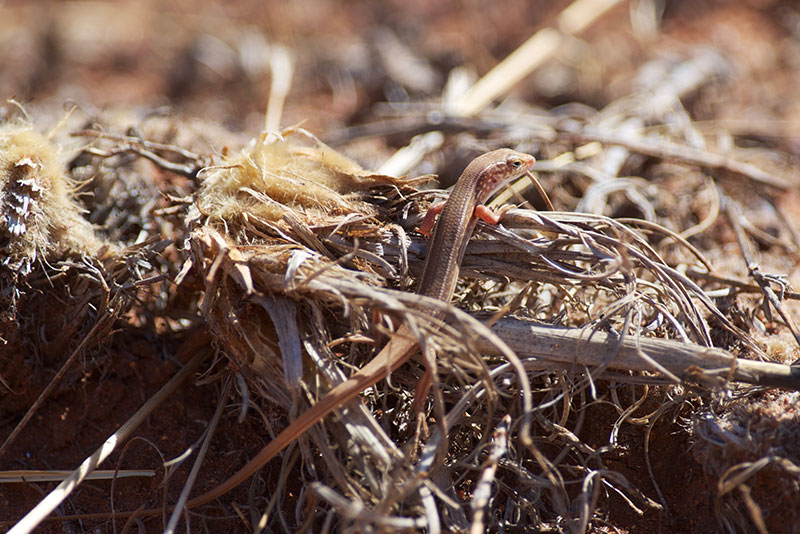
Later I poked around the grounds of the Uluru Visitor Center where I had seen a number of Military Dragons (Ctenophorus isolepis) in 2003, but found no dragons of any profession, nor any skinks or goannas or geckos for that matter. For some reason, the lizard action just wasn't happening in the desert during the day near Uluru. It's possible that I was there too early in springtime for maximum lizard activity, but the temperatures seemed high enough, and insects were abundant, so I expected a lot more lizards. Ah well, I didn't care, I had seen a *thorny devil*!
The Lasseter Highway was a much more productive herping environment as it turned out. In the late afternoon I saw a number of cute little Centralian Earless Dragons (Tympanocryptis centralis) standing up at the edge of the road for maximum sun-warming, but every time I tried to get close enough to one for pictures it would get wise and disappear into the desert. I also saw a few Central Netted Dragons in the road, most of which similarly vamoosed. One of them held its ground in the road long enough for me to get pictures out the car window. This is one of the more common agamids, and one that I had seen on previous trips.
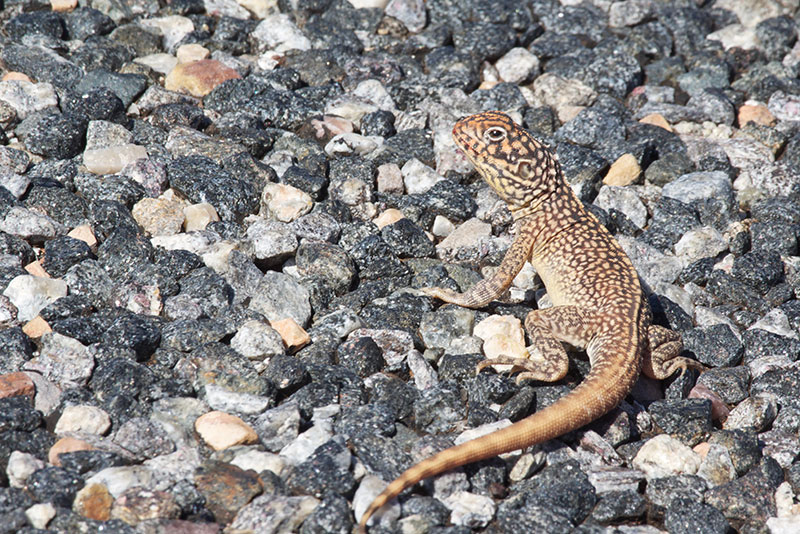
And hey, why was I out driving the Lasseter Highway in late afternoon anyway? Oh yeah, hoping to find another Thorny Devil, like this small one that had almost finished crossing the road when I saw it. I pulled over, grabbed my camera, and lay down on the edge of the road to get some low-angle shots of this little beauty.
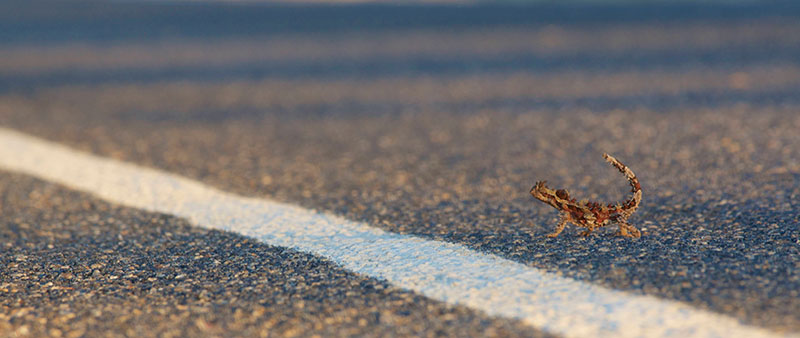
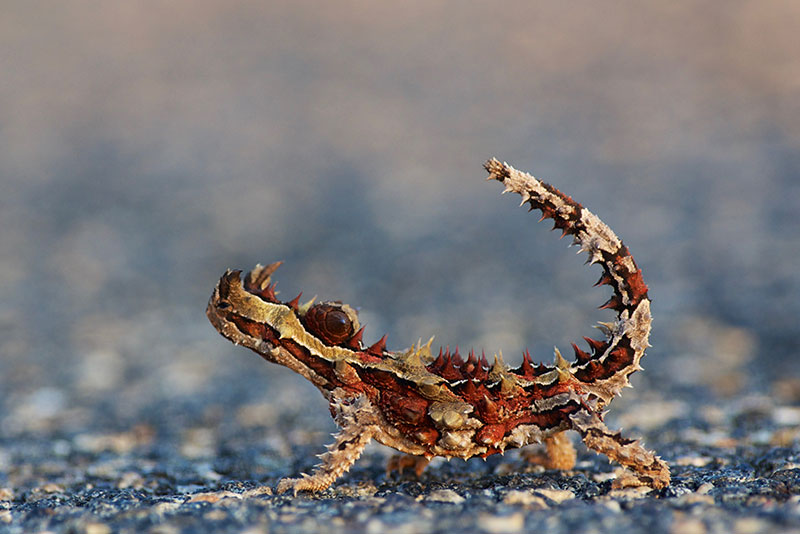
After dark the Lasseter Highway had some more goodies to offer the traveling sauriophile. For example, more spiny-tailed geckos ...
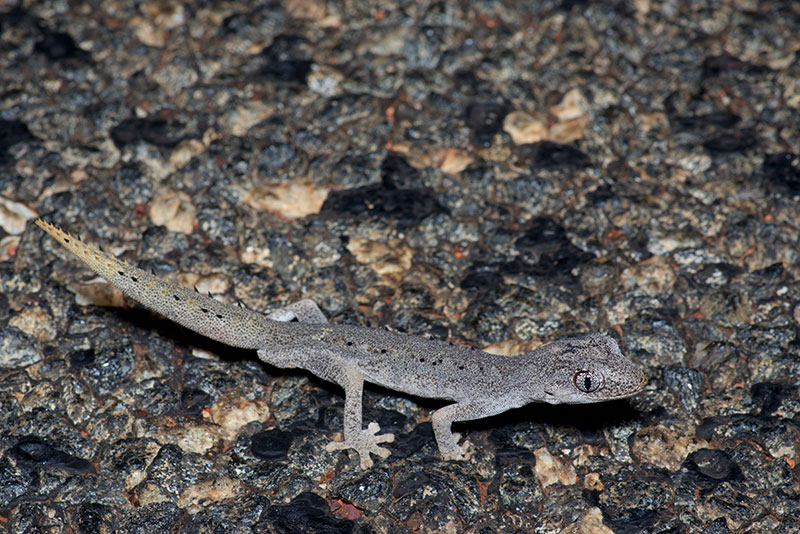
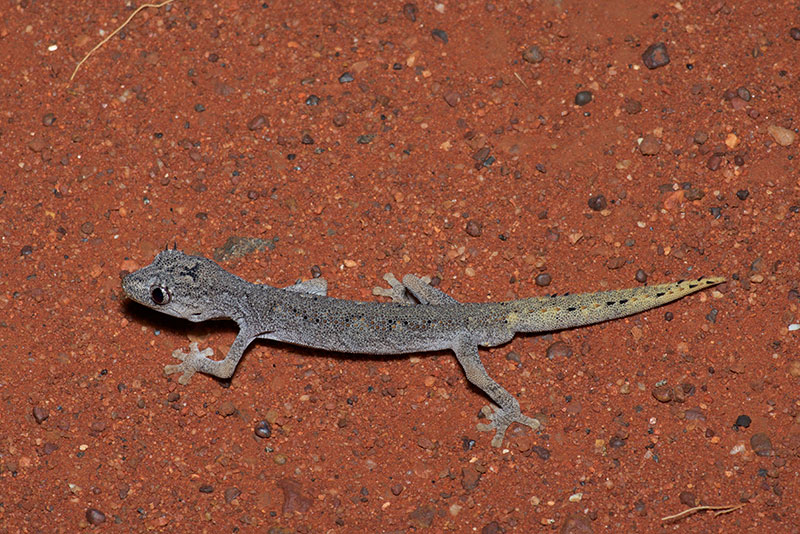
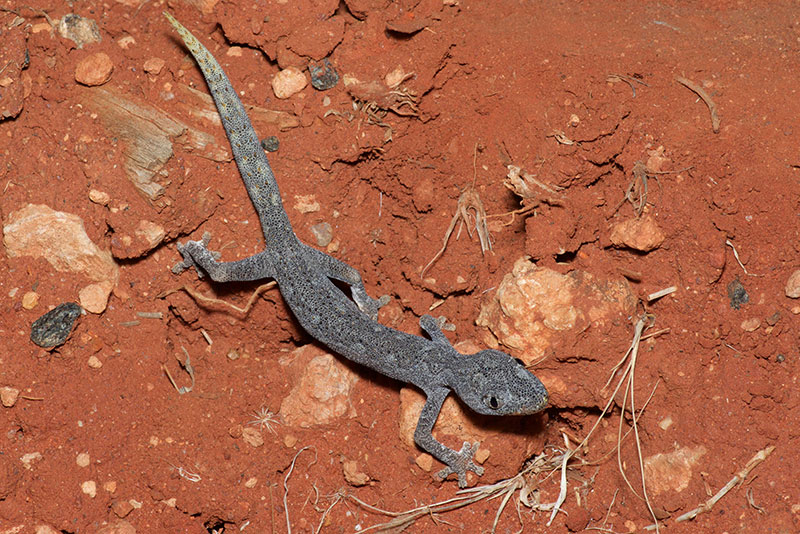
... and another Burrow-plug Gecko ...
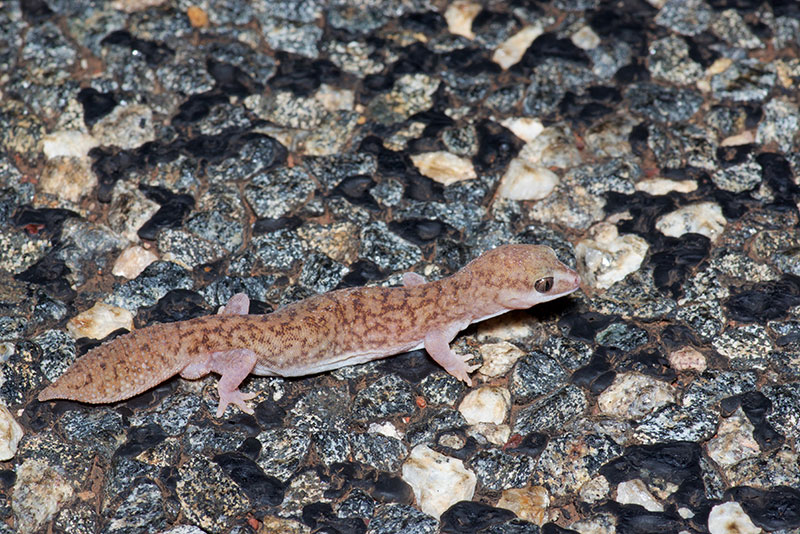
... and a gecko that was new to me, the lithe and elegant Western Beaked Gecko ...
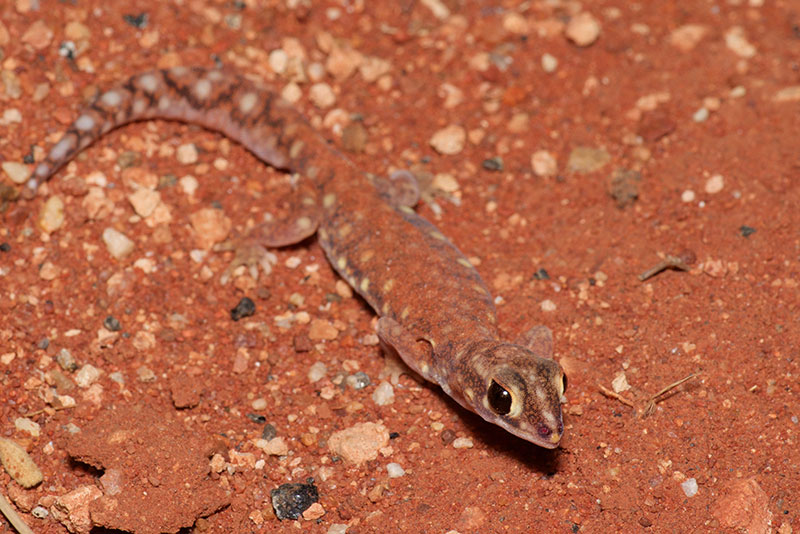
... and the gecko coup de grace, my favorite gecko of the trip so far, topping even the most excellent Broad-tailed Gecko from back near Sydney. This has got to be the cutest gecko species I have ever seen, with their big heads, huge eyes, and looks of intense concern.
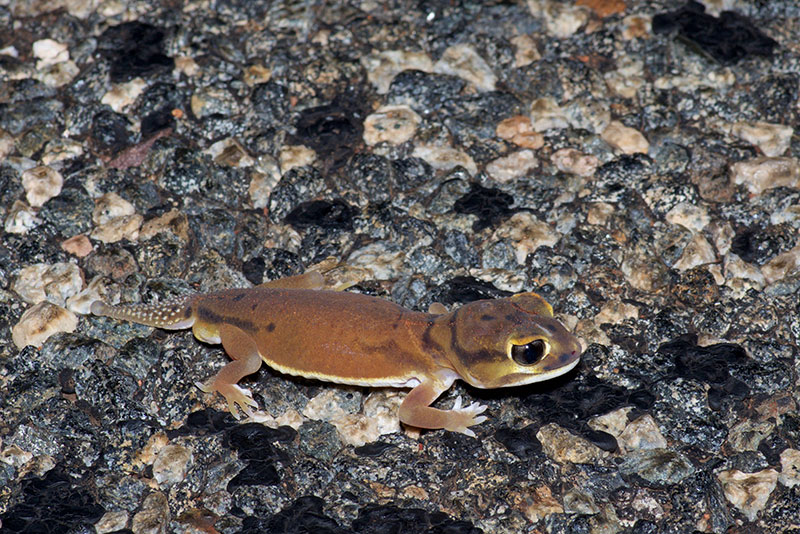
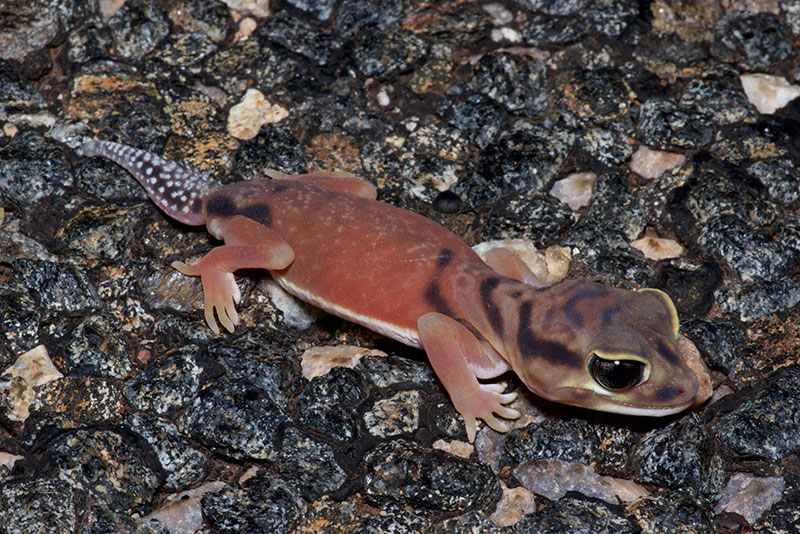
I was surprised at how few snakes I had seen so far on this trip. Back near Sydney I had seen only three, and I hadn't seen any so far in the Red Centre of Australia. (I had missed some prime herping time by being ill, but it still seemed like I should have seen one or two snakes at least in the amount of time I was out looking.) So I was particularly excited to see a small sinuous shape slithering across the road. My excitement dimmed after I got out of the car and shined my flashlight on it only to realize that it was no snake at all, but a legless lizard, and also one of the only two Australian legless lizards (family Pygopididae) that I had seen on previous trips. Ah well. That knob-tailed gecko sure was cute.
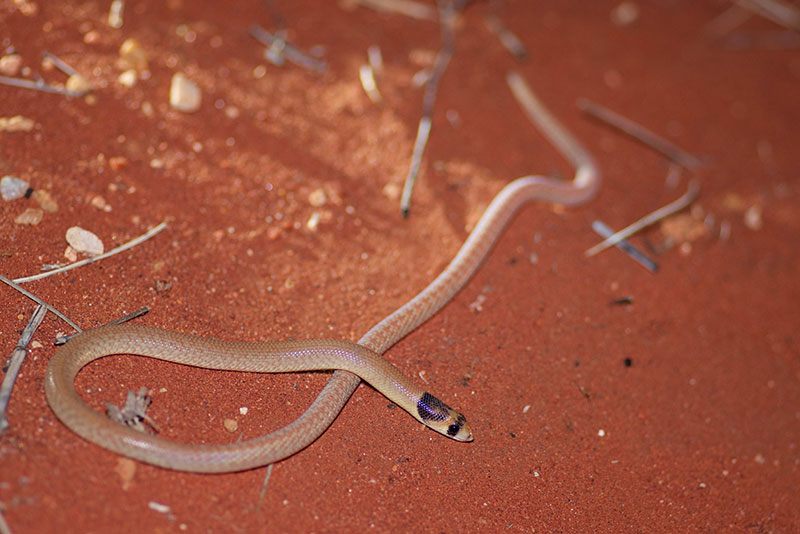
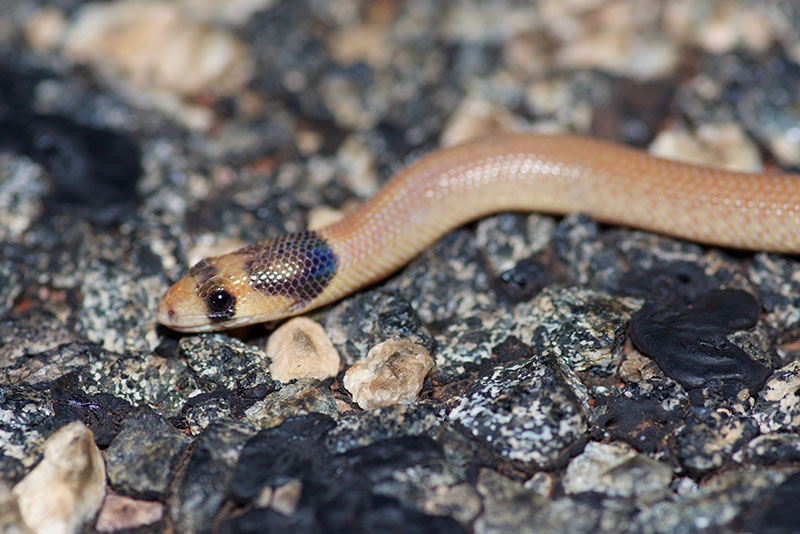
One other fantastic lizard blessed me with its presence in this area. Kata Tjuta is a rocky formation near Uluru and geologically related to it. Kata Tjuta consists of a series of mini-giant-monoliths as compared to Uluru's single extra-giant-monolith. One morning I went for a beautiful hike in Kata Tjuta called Valley of the Winds. I expected to see some lizards throughout the hike, but I think I arrived too early in the day, and I saw no significant wildlife on my way in. Ah, but on my way out, I turned a corner and saw this beautiful Perentie basking just off the trail. Perenties are Australia's largest lizards, and among its most striking. This one was just a youngster and thus not particularly huge, but as a youngster it had an especially pronounced pattern. One Perentie sighting is worth at least three dozen more mundane reptile sightings, so I ended up quite satisfied with my morning in Kata Tjuta.
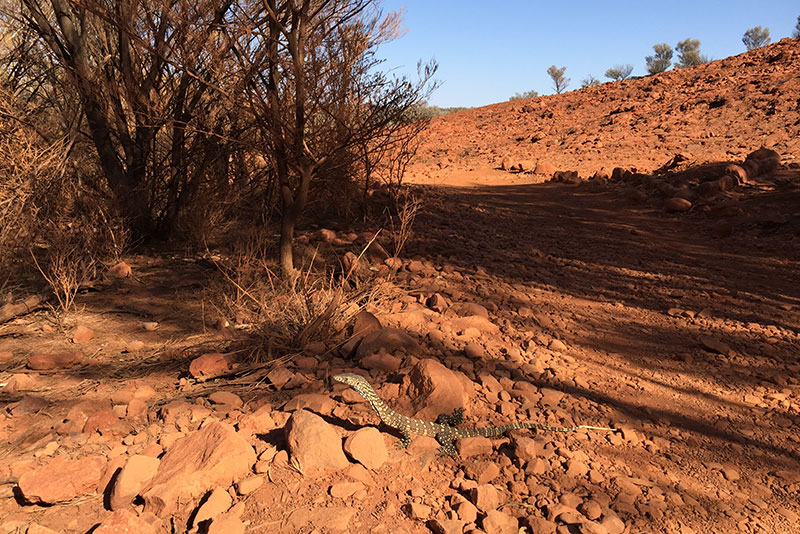
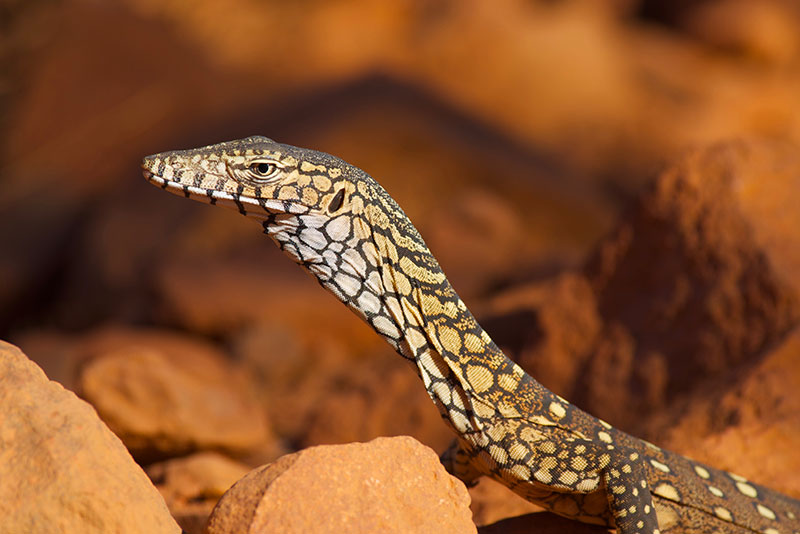
Next I traveled to the West MacDonnell Ranges feeling healthy and ready to see if I could do something about raising the ol' snake count.
Next: West MacDonnell Ranges